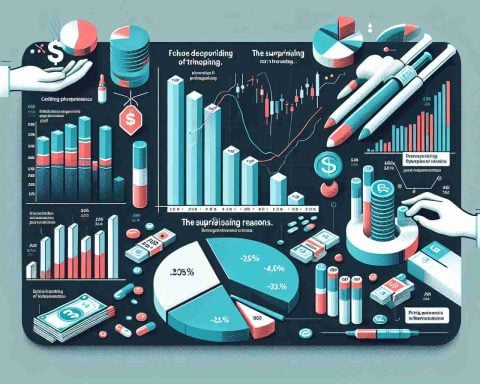Panasonic Energy is taking bold steps to reshape its supply chains. The North American branch of the company, a key player in Tesla’s battery production, is focused on reducing its dependence on Chinese materials for electric vehicle manufacturing.
The company’s president, Allan Swan, has emphasized that Africa’s rich resources and North American suppliers are now becoming more central. In a clear strategy shift, Swan explained that avoiding reliance on China is their primary goal moving forward.
Recent geopolitical changes, including prospective trade tariff increases on Chinese imports, have prompted this reevaluation. With most of Panasonic’s raw materials historically sourced from international suppliers like Canada, the company is now looking to strengthen domestic partnerships and diversify its sources considerably.
The implications of these changes come against the backdrop of the Biden Administration’s Inflation Reduction Act, which outlines strict requirements for the origin of materials utilized in electric vehicle production. This legislation is pushing numerous suppliers, including Panasonic, to reorganize their supply chains in a significant way.
As the electric vehicle industry continues to evolve, Panasonic’s willingness to adapt and pivot away from Chinese dependency underscores a broader trend in the sector. The focus is clear: innovate, adapt, and ensure sustainability in sourcing practices.
Panasonic Energy’s New Direction: Redefining Supply Chains in the EV Market
Panasonic Energy’s Strategic Shift
Panasonic Energy is making significant changes to its supply chain strategy, aiming to minimize its reliance on Chinese materials for electric vehicle (EV) manufacturing. This move is largely influenced by evolving geopolitical conditions, including the potential for increased trade tariffs on imports from China. The company’s North American branch plays a pivotal role in Tesla’s battery production, and its president, Allan Swan, has openly discussed the company’s new objectives.
Emphasizing Local and African Resources
Rather than depending on international suppliers, Panasonic Energy is now focusing on harnessing the rich mineral resources found in Africa while simultaneously strengthening partnerships with North American suppliers. This strategic shift not only aims to mitigate risk associated with foreign dependencies but also aims to create a more resilient and flexible supply chain.
Impacts of the Inflation Reduction Act
The legislative landscape is also prompting changes in the EV sector. The Biden Administration’s Inflation Reduction Act stipulates strict requirements regarding the origin of materials used in EV production. As a result, Panasonic and other manufacturers are being pushed to reorganize their supply chains, ensuring compliance with these new regulations while also striving for sustainability.
Advantages of Resource Localization
1. Reduced Supply Chain Risks: By localizing resources and reducing dependency on a single country, Panasonic Energy can better manage risks related to political instability, tariffs, or trade disputes.
2. Enhanced Sustainability: The focus on African and North American suppliers aligns with sustainable practices, reducing the carbon footprint associated with shipping materials from distant countries.
3. Supporting Local Economies: Investing in local and regional suppliers can stimulate economic growth in those areas, creating jobs and promoting industry development.
Trends and Innovations in the EV Industry
The electric vehicle industry is experiencing rapid transformation, with several notable trends emerging:
– Technological Advancements: Advanced battery technologies, including solid-state batteries and improved lithium-ion alternatives, are being researched and developed.
– Increased Demand for EVs: Growing consumer interest in electric vehicles is driving manufacturers to innovate and scale production.
– Global Policy Changes: As countries implement stricter emissions regulations, the demand for domestically sourced materials for EV production will continue to rise.
Limitations and Challenges
While Panasonic Energy’s shift away from Chinese materials presents numerous advantages, it also comes with challenges:
– Infrastructure and Logistics: Developing new supply chains requires significant investment in infrastructure and logistics to ensure efficiency.
– Resource Availability: In Africa, ongoing regulation and political stability can impact access to essential minerals, complicating sourcing efforts.
– Market Competition: Competing with established players who have deeper ties to Chinese sources may present challenges in securing necessary contracts and partnerships.
Conclusion
Panasonic Energy’s strategic pivot reflects a broader trend in the EV industry toward resource localization and sustainability. By embracing local and African sources while responding to legislative demands, the company is positioning itself at the forefront of a rapidly evolving market. These changes could not only enhance Panasonic’s operational resilience but also contribute to a more sustainable future for electric vehicle manufacturing.
For further insights on industry developments and sustainability practices, visit Panasonic.













